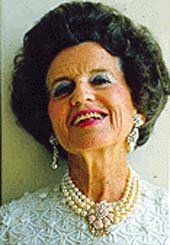America’s sweetheart and eternal girl next door is alive and well at 89
by Christopher Cooper
She hasn’t graced the silver screen since 1968 or appeared on television in decades, but at 89, singer/actress Doris Day is one of a select few bona fide living superstars from Hollywood’s golden era.
“I knew Doris Day before she was a virgin,” cracked wit Oscar Levant about the perky blond beauty with the sunny disposition. (The joke was so good, Groucho Marx stole it for himself.)
Born Doris Kappelhoff on April 3, 1924 (the same day and year as Marlon Brando), she changed her name when she got a job as vocalist with Barney Rapp’s band, where her first spotlight number was “Day by Day.” She was signed for pictures by Warner Brothers in 1948, and quickly became one of Hollywood’s brightest young stars.
 |
| Romance On The High Seas (1948) |
 |
| Singing "Secret Love" in Calamity Jane (1953) |
 |
| With James Cagney in Love Me Or Leave Me (1955) |
 |
| With James Stewart in Alfred Hitchock's The Man Who Knew Too Much (1956) |
 |
| With Rex Harrison in Midnight Lace (1960) |
 |
| Rehearsing with Rock for Send Me No Flowers (1964) |
Though later in life she protested her screen image as a virginal goody-two-shoes, her way of life was nevertheless an example of positive thinking and clean living. A Christian Scientist for most of her life, she didn’t drink or smoke--although she admitted in her 1975 memoir that she’d fall off the wagon with a Tom Collins on occasion when she was “feeling crotchety.”
Doris turned down the part of lascivious cougar Mrs. Robinson in The Graduate because she deemed the role too racy. (Anne Bancroft then got the part.) Still, she was socially liberal. Rumored to have dated African-American L.A. Dodger Maury Wills, Day’s own father married a black woman his later years. Married unsuccessfully four times, she publicly stated that she felt a couple should live together before tying the knot.
She admitted that upon first hearing the song “Que Sera Sera,” which became her biggest hit and signature tune, she didn’t much care for it, but later warmed to the song’s simple philosophy: What will be, will be.
She had been the #1 box office champion for four years running in the early 1960s, but made a graceful exit from show business after her TV sitcom “The Doris Day Show” ended a five-year run in 1973. She turned her considerable energy toward another lifelong passion by founding a rescue organization called Actors and Others for Animals in 1971. The charity, now championed by Day’s old friend Betty White, still thrives. Day hosted a short-lived cable series centered around animals, “Doris Day’s Best Friends,” in 1985.
 |
| With son Terry Melcher circa 1970 |
 |
| Doris founded Actors and Others for Animals in the early 1970s |
 |
| Doris with some of her best friends |
Today, Doris Day lives a quiet life. She has outlived her beloved only son, record producer Terry Melcher, who died of cancer in 2004. She currently shares her house in Carmel-by-the-Sea, California with six dogs and four cats. In 2011, she did record an album and agreed to a few rare interviews via radio to promote it, but is content to let the new stars shine and enjoy her retirement. “I’ve had mine,” she told an interviewer in 2012. “I had a great time. Now it’s their turn.”
To hear Doris Day's 2012 NPR interview, click here.
Little-known Doris Day data:
- Dated Ronald Reagan between his marriages to Jane Wyman and Nancy Davis.
- Received just one Oscar nomination, as Best Actress for Pillow Talk (1959).
- Feared for her son Terry Melcher’s life in 1969. The music producer had been the initial target of Charles Manson’s gang and owner of the house rented by Roman Polanski and Sharon Tate at the time of the grisly Helter Skelter murders.
- Hates the name Doris Day, so all her close friends call her nicknames like Clara Bixby, Eunice and Suzie Creamcheese.
- Is so afraid to fly that she turned down a recent Kennedy Center Honors spot. She has been terrified of airplanes after traveling through a blizzard on a tour with Bob Hope in the 1940s.
- Owned a pet-friendly hotel in Carmel-by-the-Sea, California.
- Cannot read music.
- Preferred being photographed on the right side, as she thought her left was too cheeky.
- Swore by a beauty regimen that included slathering her entire body with Vaseline once a week.
As seen on DoYouRemember.com.











